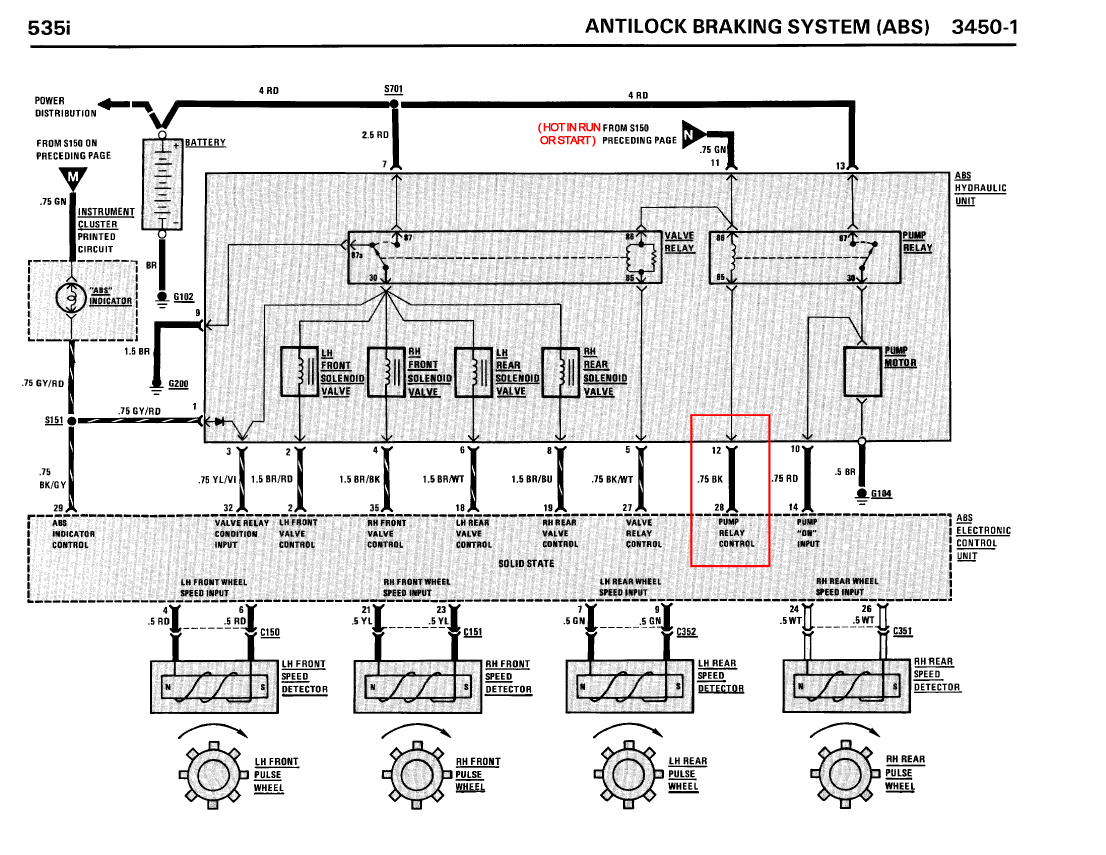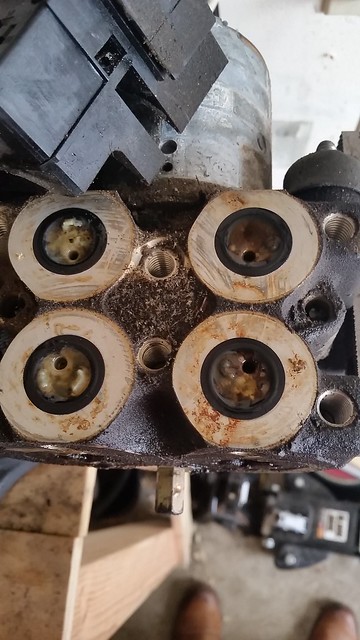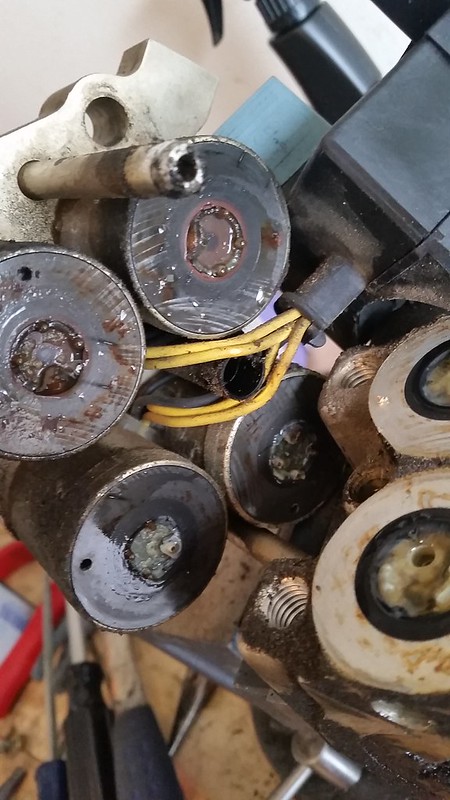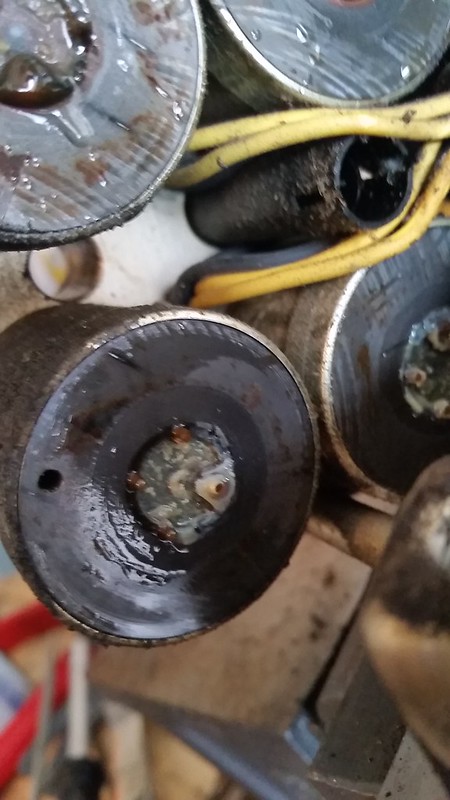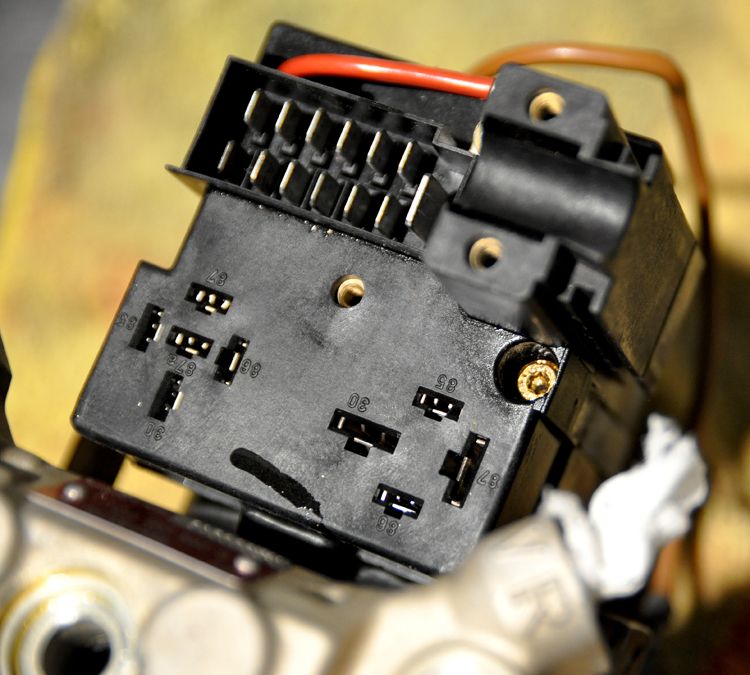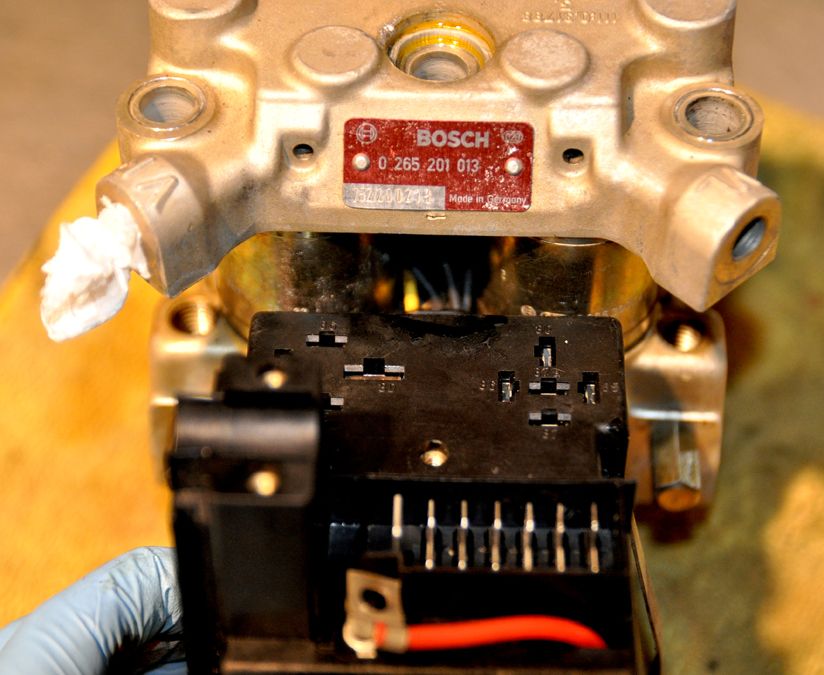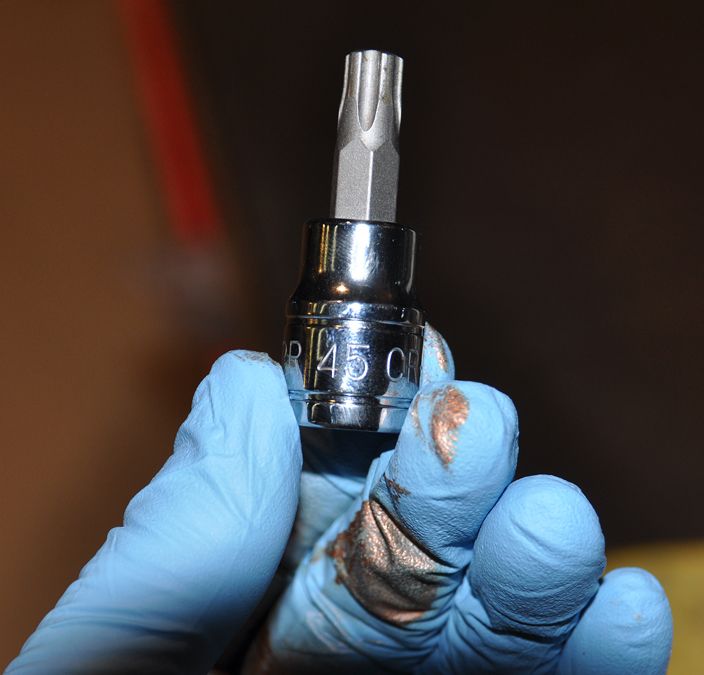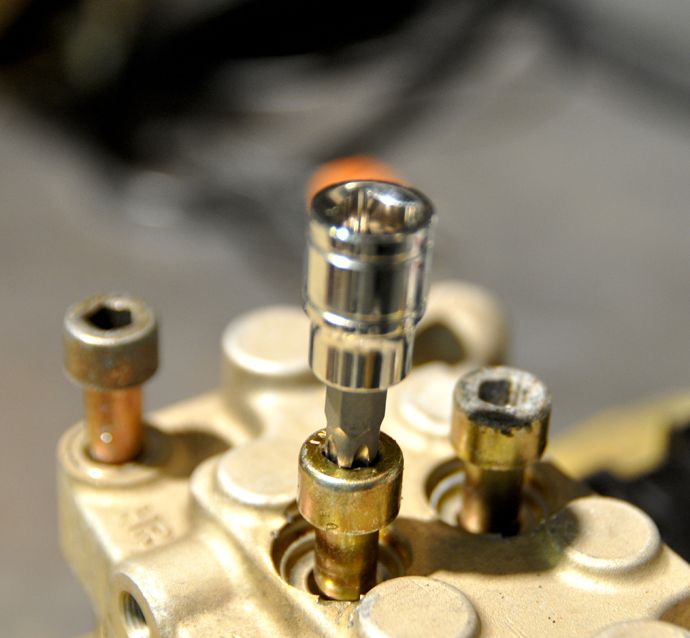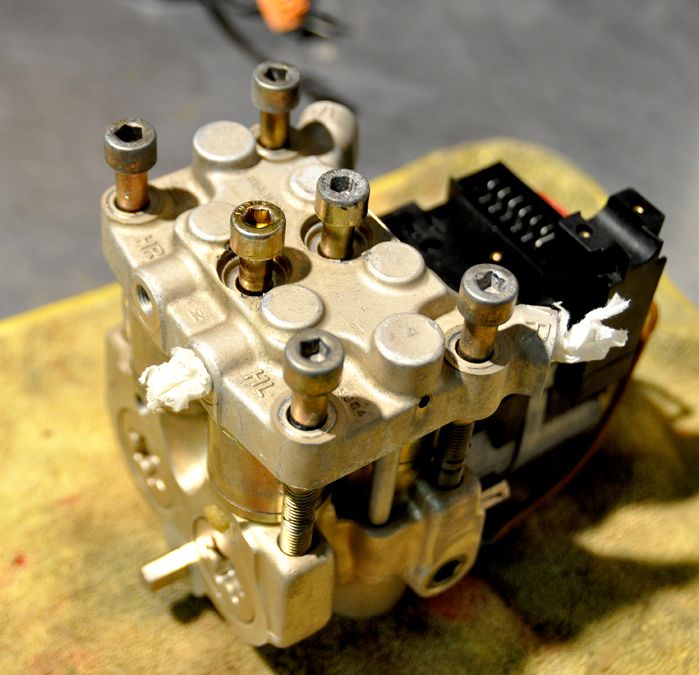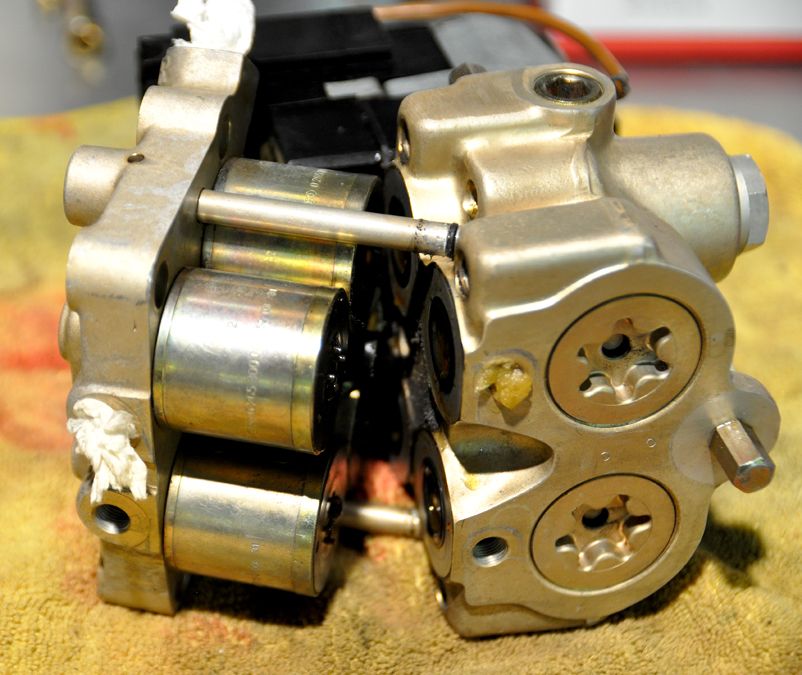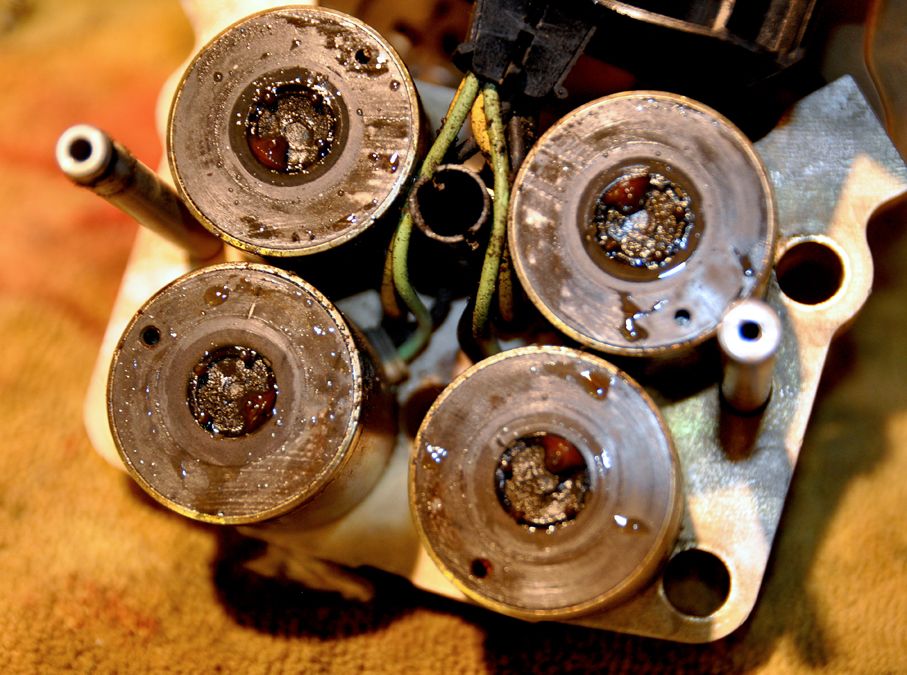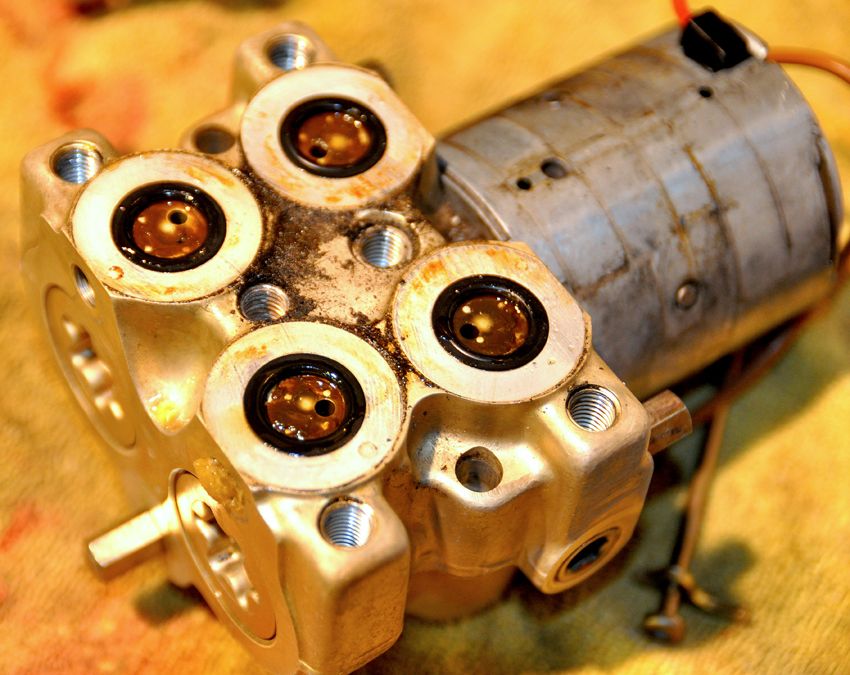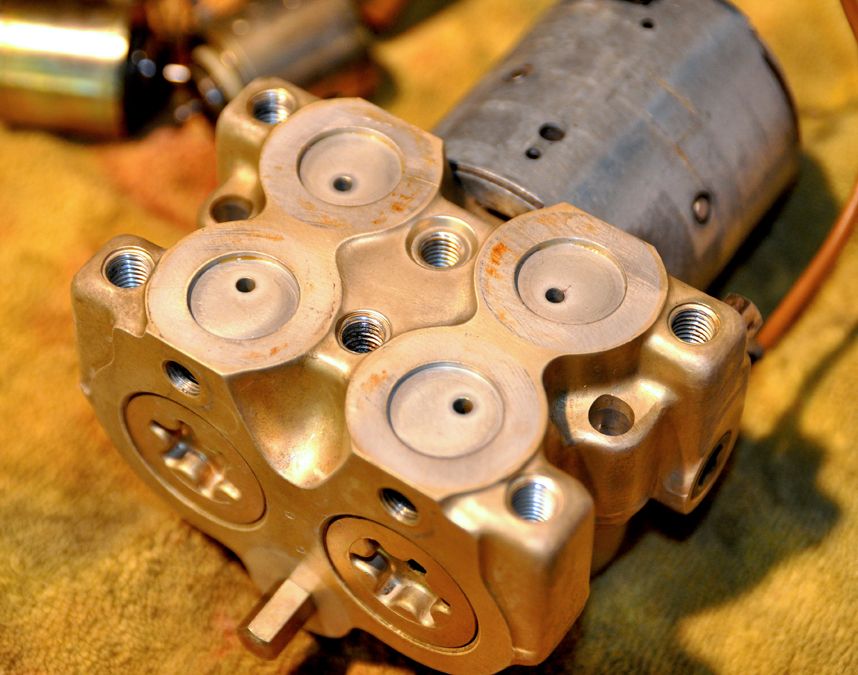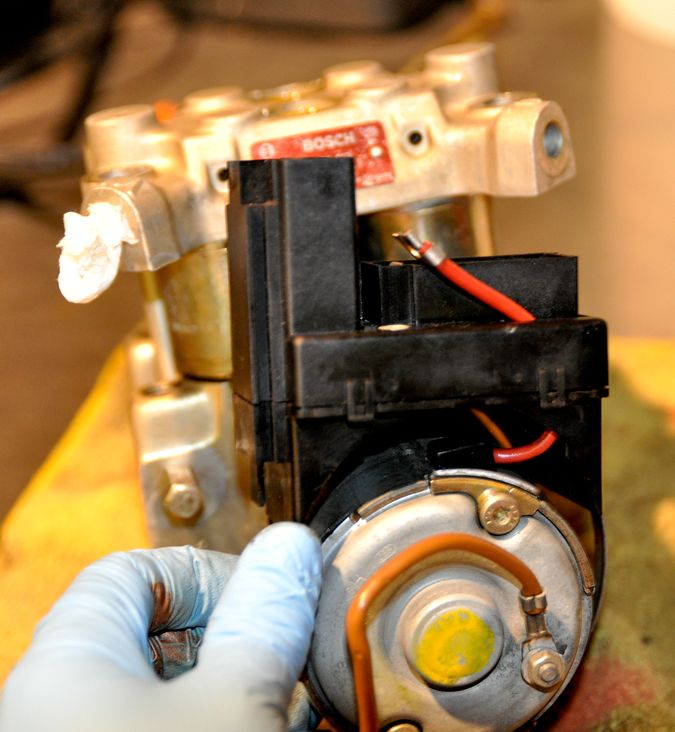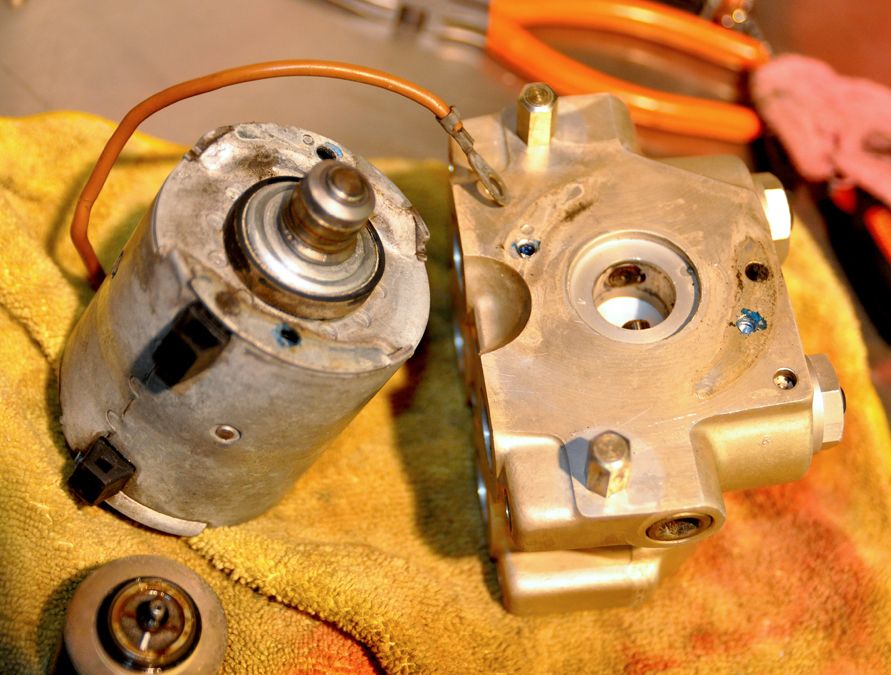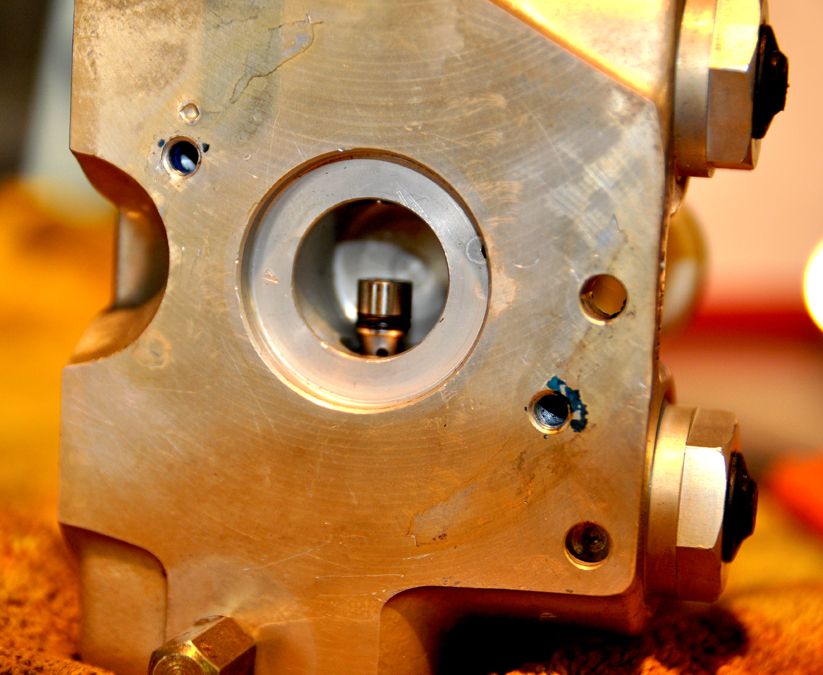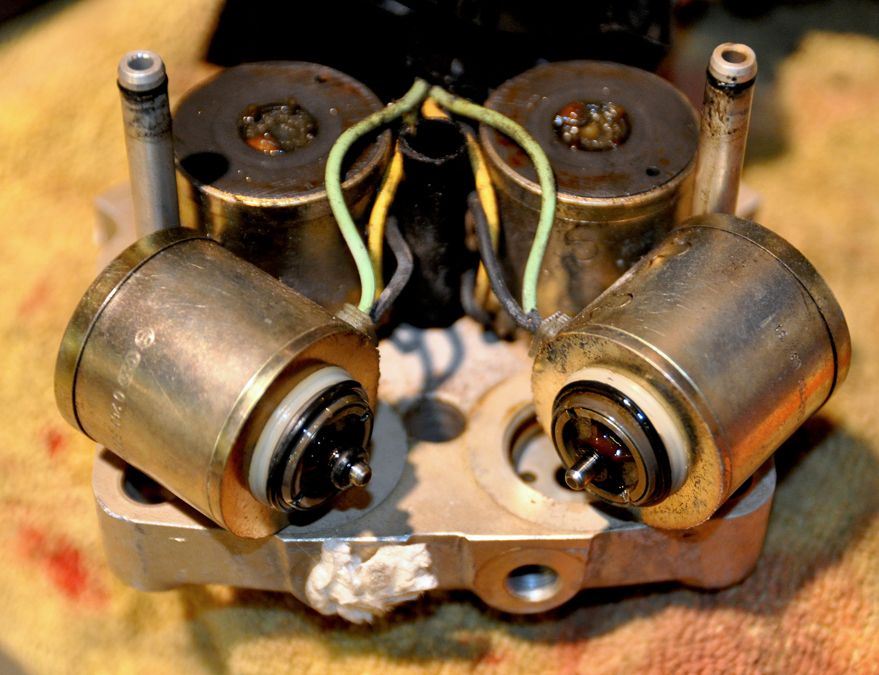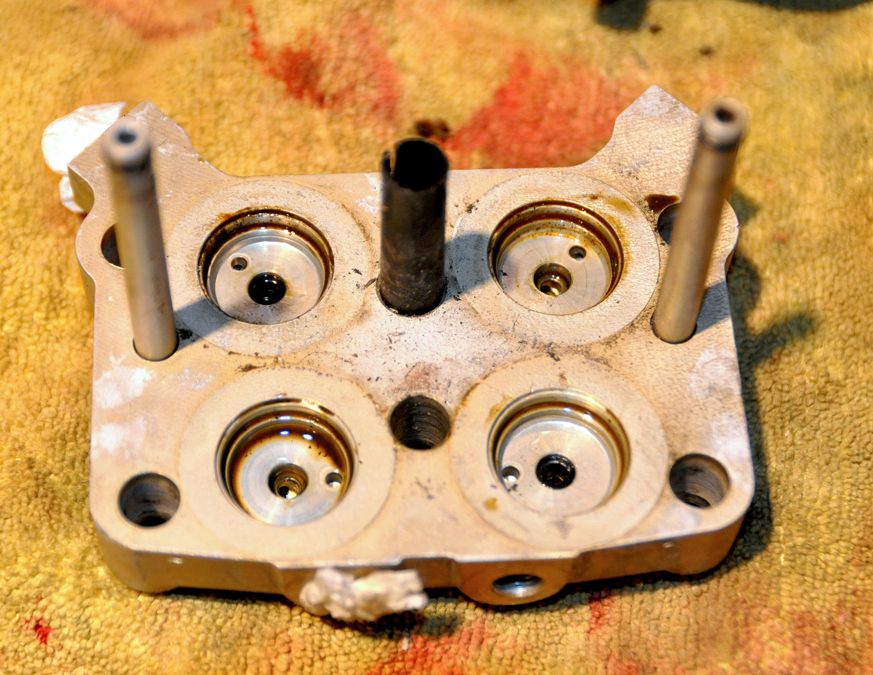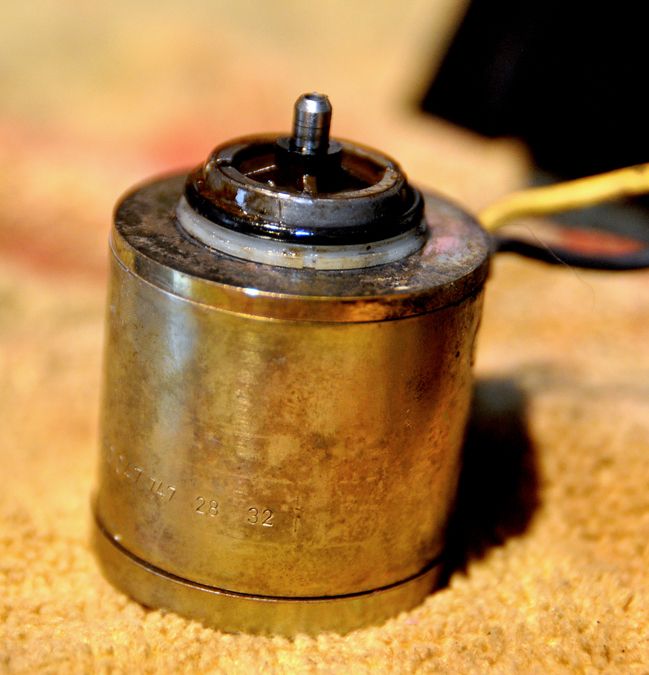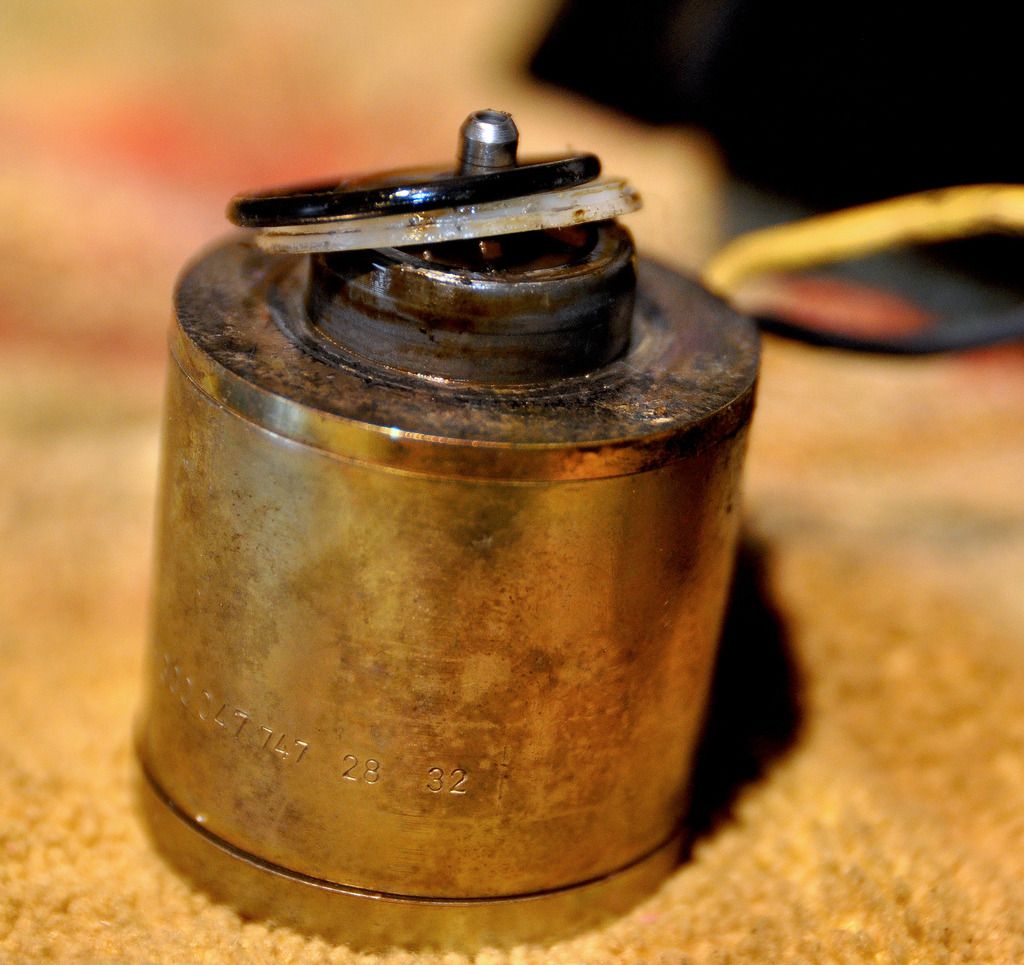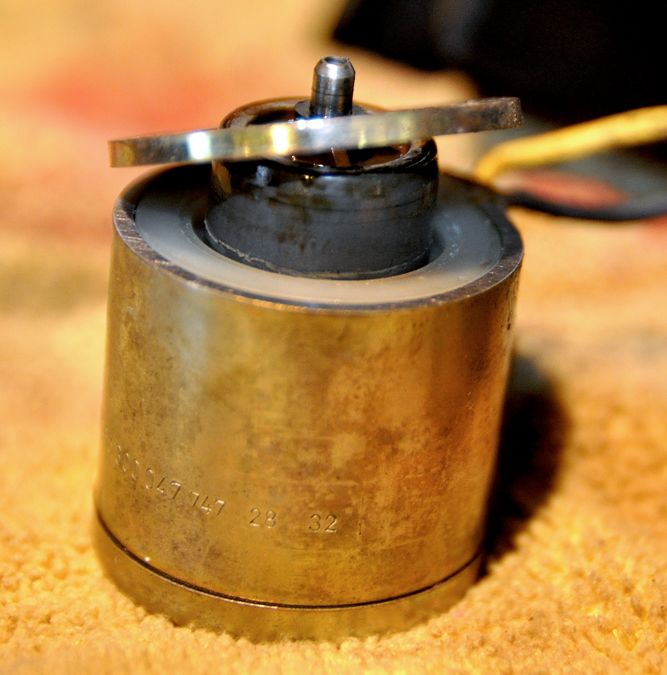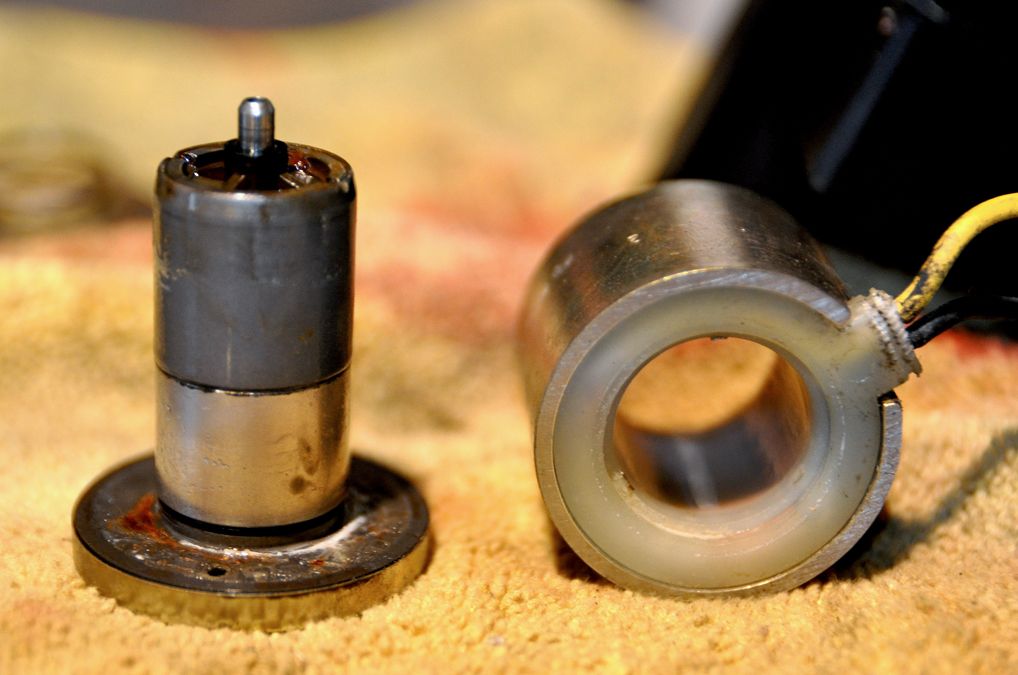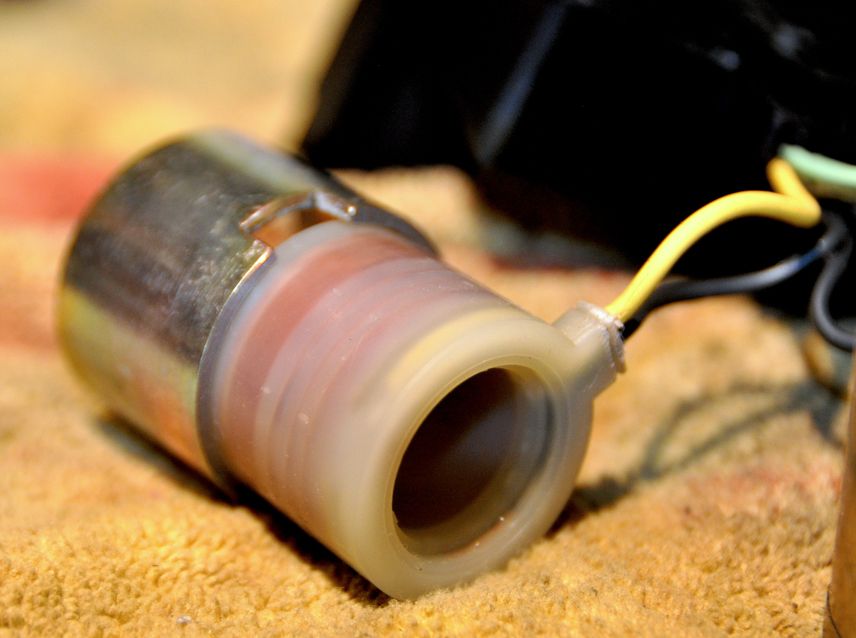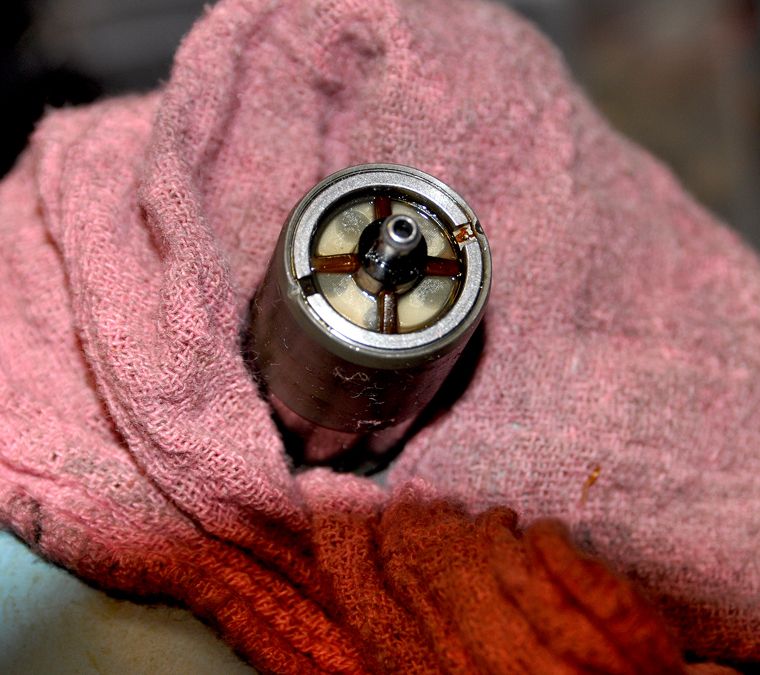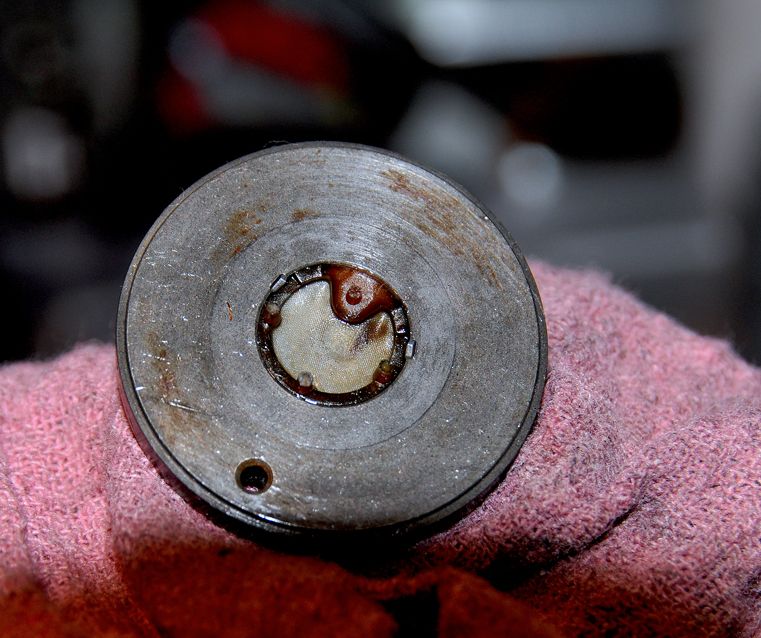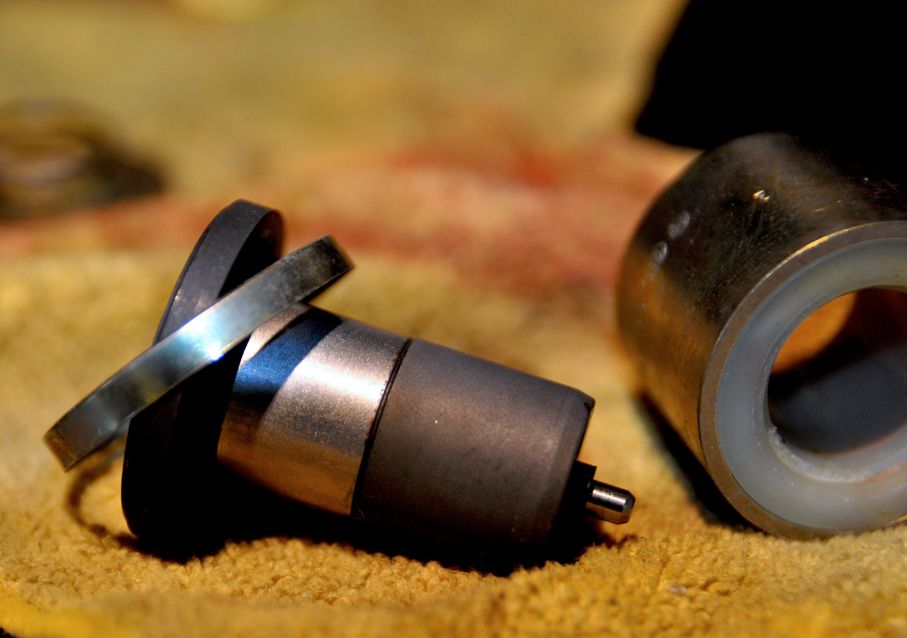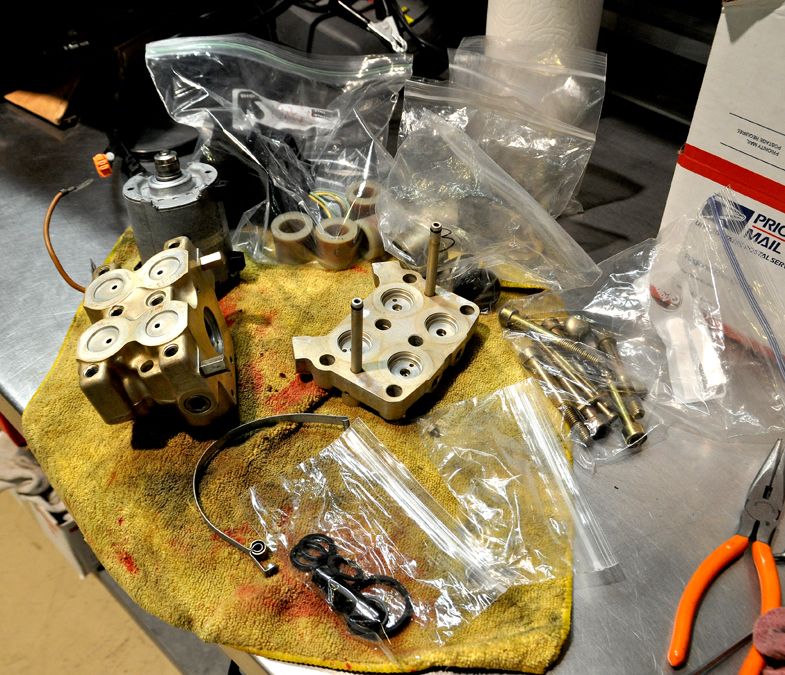ABS unit cleaning procedure
Posted: Oct 06, 2012 11:03 AM
O.K. guys. I have used this site often for troubleshooting, there is a lot of information on here that is well written and very helpful. It's time I gave back! I took apart my ABS unit a couple of weekends ago and fixed my brake pulling problem. Hopefully other people will find this to be a useful writeup.
STEP 1. remove plastic cover for the electrical connector on the unit. you do this by removing the screw in the center and lifting straight upwards. note the position of the brown ground wire, it is clipped to the side of this plastic cover.
https://www.facebook.com/photo.php?fbid ... aae97e84fb
STEP 2. remove the two screws holding the harness in place, once these two screws are removed, you can remove the electrical connector by lifting it upwards.
https://www.facebook.com/photo.php?fbid ... 0653acb17b
STEP 3. remove all 6 hydraulic lines from the ABS valve block. be patient, and use line wrenches! you don't want to strip these.
https://www.facebook.com/photo.php?fbid ... dce019184e
STEP 4. lift the ABS unit upwards and tilt it rearwards. this is difficult to do because the hydraulic lines are fighting you the whole time. once it is back far enough, remove the nut on the front of the hydraulic motor for the ground wire. now remove the ABS unit.
https://www.facebook.com/photo.php?fbid ... d57276b307
STEP 5. once the ABS unit is removed, your master cylinder will drain itself and make a huge mess on your garage floor. i found that 14 gauge wire worked really well for jamming in there to keep it from dripping out. you only need to block the two lines coming from the master cylinder, they are the two that will be almost pouring brake fluid out.
https://www.facebook.com/photo.php?fbid ... af8f96791f
this is just a closer view of those wires stopping the brake fluid leak.
https://www.facebook.com/photo.php?fbid ... c0aa1ed416
STEP 6. with the ABS unit on a bench, you need to remove the caps that cover the center bolts. these caps are sort of like older wheel bearing style dust caps. you can take a screw driver or punch and get under one edge to lift them up.
https://www.facebook.com/photo.php?fbid ... 62dfcc5aa0
STEP 7. use some penetrating oil on these bolts. they have probably been there for 25 years. notice that they are FIVE sided fasteners... I've never seen those before. i'm sure bosch didn't want anyone getting into these things. I found that a very close fitting allen does work if you tap it in with a hammer. i would not recommend doing this, but it worked for me. i was trying to get this done on a limited time frame and had to try. i am not sure where you can get the special tool for this.
https://www.facebook.com/photo.php?fbid ... 0a93119be5
STEP 8. once those bolts are out, you can gently break free the valve block. be gentle because the wires that control those solenoids are still connected to the motor/relay assembly. note the two relays, the metal strap that attaches the relay box to the motor, and the positive wire for the pump
https://www.facebook.com/photo.php?fbid ... 66b17b86bd
STEP 9. remove the two relays. there is a small torx opposite the end of that metal strap, under where the relays were. loosen that bolt and the strap will become loose. remove the other torx bolt for the positive wire to the hydraulic pump. feed this wire down through the hole and lift the electrical section off with the hydraulic solenoids.
https://www.facebook.com/photo.php?fbid ... 924167973b
STEP 10. this is what the top valve block looks like. spray brake clean into the holes where the arrows are. fluid should come out of the small holes on top. make sure you really clean these out. do it until it appears that you have even flow out of all of them.
https://www.facebook.com/photo.php?fbid ... fd6dede41f
STEP 10. this is what the underside of the solenoids look like. note the small brown screens on all 4 of them. remove these screens by using a pick to get under the side where the larger piece of plastic is. spray them with brake clean. also spray brake clean into all 4 holes on the block, fluid should come out of the top of the solenoids. again, spray the hell out of it until you think they are all flowing equally.
https://www.facebook.com/photo.php?fbid ... 69f4a69e4d
a close up of one of the solenoids. note the small spring, there is a check ball under it. if it falls out, the ball goes in first, then the small part of the spring (it is tapered) goes towards the ball. the brown screen has a small tab that slides into the spring.
https://www.facebook.com/photo.php?fbid ... d23599ce31
STEP 11. reassemble it all and THOROUGHLY bleed the brakes. doing this fixed my brake pull 100%. i tried activating the ABS, bleeding it a bunch of times. nothing worked, so i tried this. like i said, hopefully other people find this helpful if they discover their ABS unit is causing brake problems. don't worry if you don't see any big chunks of shit coming out of the unit, i was not able to find the source of my restriction either. good luck!
STEP 1. remove plastic cover for the electrical connector on the unit. you do this by removing the screw in the center and lifting straight upwards. note the position of the brown ground wire, it is clipped to the side of this plastic cover.
https://www.facebook.com/photo.php?fbid ... aae97e84fb
STEP 2. remove the two screws holding the harness in place, once these two screws are removed, you can remove the electrical connector by lifting it upwards.
https://www.facebook.com/photo.php?fbid ... 0653acb17b
STEP 3. remove all 6 hydraulic lines from the ABS valve block. be patient, and use line wrenches! you don't want to strip these.
https://www.facebook.com/photo.php?fbid ... dce019184e
STEP 4. lift the ABS unit upwards and tilt it rearwards. this is difficult to do because the hydraulic lines are fighting you the whole time. once it is back far enough, remove the nut on the front of the hydraulic motor for the ground wire. now remove the ABS unit.
https://www.facebook.com/photo.php?fbid ... d57276b307
STEP 5. once the ABS unit is removed, your master cylinder will drain itself and make a huge mess on your garage floor. i found that 14 gauge wire worked really well for jamming in there to keep it from dripping out. you only need to block the two lines coming from the master cylinder, they are the two that will be almost pouring brake fluid out.
https://www.facebook.com/photo.php?fbid ... af8f96791f
this is just a closer view of those wires stopping the brake fluid leak.
https://www.facebook.com/photo.php?fbid ... c0aa1ed416
STEP 6. with the ABS unit on a bench, you need to remove the caps that cover the center bolts. these caps are sort of like older wheel bearing style dust caps. you can take a screw driver or punch and get under one edge to lift them up.
https://www.facebook.com/photo.php?fbid ... 62dfcc5aa0
STEP 7. use some penetrating oil on these bolts. they have probably been there for 25 years. notice that they are FIVE sided fasteners... I've never seen those before. i'm sure bosch didn't want anyone getting into these things. I found that a very close fitting allen does work if you tap it in with a hammer. i would not recommend doing this, but it worked for me. i was trying to get this done on a limited time frame and had to try. i am not sure where you can get the special tool for this.
https://www.facebook.com/photo.php?fbid ... 0a93119be5
STEP 8. once those bolts are out, you can gently break free the valve block. be gentle because the wires that control those solenoids are still connected to the motor/relay assembly. note the two relays, the metal strap that attaches the relay box to the motor, and the positive wire for the pump
https://www.facebook.com/photo.php?fbid ... 66b17b86bd
STEP 9. remove the two relays. there is a small torx opposite the end of that metal strap, under where the relays were. loosen that bolt and the strap will become loose. remove the other torx bolt for the positive wire to the hydraulic pump. feed this wire down through the hole and lift the electrical section off with the hydraulic solenoids.
https://www.facebook.com/photo.php?fbid ... 924167973b
STEP 10. this is what the top valve block looks like. spray brake clean into the holes where the arrows are. fluid should come out of the small holes on top. make sure you really clean these out. do it until it appears that you have even flow out of all of them.
https://www.facebook.com/photo.php?fbid ... fd6dede41f
STEP 10. this is what the underside of the solenoids look like. note the small brown screens on all 4 of them. remove these screens by using a pick to get under the side where the larger piece of plastic is. spray them with brake clean. also spray brake clean into all 4 holes on the block, fluid should come out of the top of the solenoids. again, spray the hell out of it until you think they are all flowing equally.
https://www.facebook.com/photo.php?fbid ... 69f4a69e4d
a close up of one of the solenoids. note the small spring, there is a check ball under it. if it falls out, the ball goes in first, then the small part of the spring (it is tapered) goes towards the ball. the brown screen has a small tab that slides into the spring.
https://www.facebook.com/photo.php?fbid ... d23599ce31
STEP 11. reassemble it all and THOROUGHLY bleed the brakes. doing this fixed my brake pull 100%. i tried activating the ABS, bleeding it a bunch of times. nothing worked, so i tried this. like i said, hopefully other people find this helpful if they discover their ABS unit is causing brake problems. don't worry if you don't see any big chunks of shit coming out of the unit, i was not able to find the source of my restriction either. good luck!
